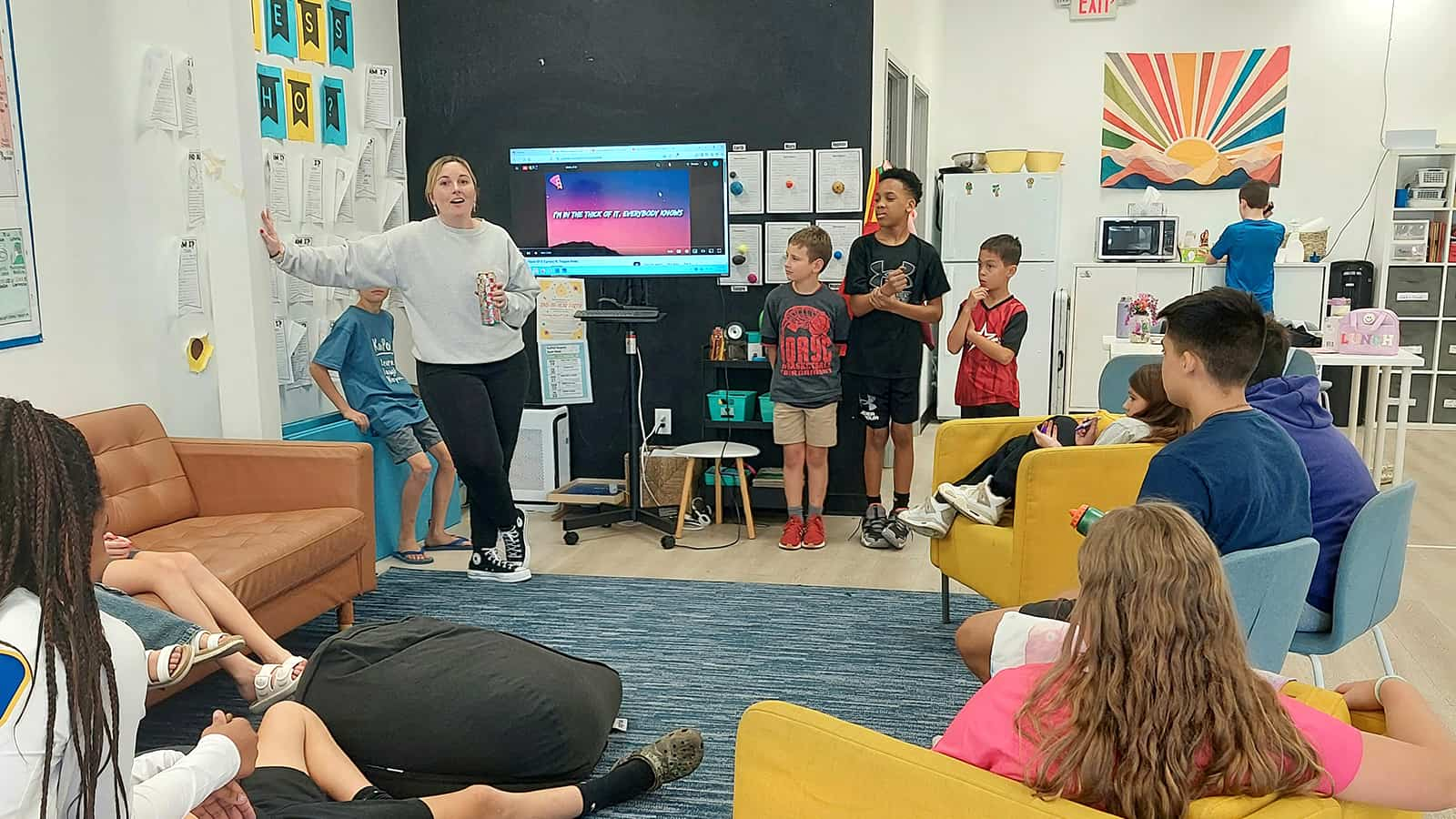This is the first post in The Microschool Founder’s Journey, a series designed to give prospective founders insight into what it really takes to start a microschool. Over the coming weeks, we’ll walk through motivations, models, challenges, and success stories, so you can see how educators like you are building schools that reflect their vision and values.
Why Microschools, and Why Now?
Across the country, teachers are searching for better ways to reach every student. Surveys show that while many parents are satisfied with their own child’s school, confidence in the system overall has dropped sharply. In 2025, only 24% of Americans said they were satisfied with the nation’s schools, which is the lowest in decades.1, 2
That’s why more educators and families are turning toward microschools and learning pods—small, flexible communities designed around personalized education. Microschools don’t replace traditional schools; they expand the options available, giving educators freedom and families choices.
What Is a Microschool?
Microschools are modern versions of the one-room schoolhouse, designed to be small, adaptable, and community-driven. They go by many names: microschools, nano schools, even learning pods. But they share some common features:
- Small size – often 15–30 students, with the national median at 223
- Multi-age learning – students grouped by stage or interest, not just grade level
- Personalized education – flexible pacing, hands-on projects, and customized plans
- Educator-led innovation – often started by teachers seeking autonomy and creativity
If you’ve ever wondered how to start a microschool, these are the foundations most founders begin with.
The Growth of Microschools
The microschool movement is no longer on the margins:
- Between 750,000 and 2.1 million students nationwide are enrolled in microschools full time.4
- Families are drawn to personalized learning (60%), flexible schedules (60%), and small class sizes (49%).5
- The movement is deeply diverse, with models ranging from Montessori and project-based learning to faith-based or hybrid schools.
As state policies expand school choice and education savings accounts, it’s becoming easier for teachers to consider starting a microschool in their own community.
Why Educators Are Starting Microschools
Research shows that over 70% of microschool founders have an education background.3 Though founders include parents, entrepreneurs, and other professionals, teachers represent the majority who are leading this movement because microschools allow them to:
- Reclaim autonomy – design curriculum, schedules, and culture without top-down mandates.
- Make a real impact – small groups mean deeper connections and support for each child.
- Align with their philosophy – whether Montessori, STEM-focused, faith-based, or inquiry-driven.
- Build strong communities – parents, teachers, and students working together as partners.
For many, the question isn’t why but how to start a microschool—and what support is available to make it possible.
What Families Value
Parents often choose microschools because their children need something more than what large schools can provide. Based on an EdChoice survey done in partnership with KaiPod, three in five parents are also motivated by the more flexible schedule and nearly half cited small class sizes as the reason they switched to a microschool. According to the National Microschooling Center’s American Microschools 2025 report:
- 81% of microschools tracking academics report 1–2 years of growth in a single school year.
- Families see happiness, social-emotional growth, and future-ready skills as equally important as academics.
- Many microschools serve students with learning differences, ADHD, autism, or trauma backgrounds, who thrive in smaller, personalized environments.
One parent put it simply: “Microschooling is life-changing for our whole family.”
Thinking About Starting a Microschool?
Of course, launching a microschool isn’t without hurdles, including things like finding space, managing tuition, or navigating local regulations. But thousands of educators are already proving it’s possible, often with support from networks, peer communities, and programs designed specifically to help new founders.
The key is that you don’t have to figure out how to start a microschool alone. There’s a growing ecosystem of resources—and a community of educators—ready to help you succeed. Programs like KaiPod Catalyst are designed to guide teachers step by step, from shaping your vision to opening your doors.
Final Thoughts
Microschools are one of the most dynamic shifts in education today. They empower teachers to lead with creativity, offer families true choice, and bring personalized education to life at a human scale.
This series will walk alongside you through every stage of the founder’s journey. In our next post, we’ll look at how teachers are starting microschools to overcome burnout and rediscover their purpose.
Ready to Explore Your Own Microschool Journey?
If you’re inspired by the idea of starting a microschool, you don’t have to do it alone. KaiPod Learning’s Catalyst program gives educators the training, coaching, and community to turn a vision into a thriving school.
Wondering if it’s the right path for you? Take our quick 2-minute Microschool Readiness Quiz to see if you’re a good fit and get personalized insights to guide your next steps.
Sources:
1 https://news.gallup.com/poll/691838/schools-receive-better-grades-students-2025.aspx
2 https://www.edweek.org/leadership/americans-satisfaction-with-public-schools-hits-24-year-low/2025/02
3 https://22424203.fs1.hubspotusercontent-na1.net/hubfs/22424203/American%20Microschools%202025.pdf
4 https://www.rand.org/pubs/research_reports/RRA3698-1.html
5 https://www.edchoice.org/wp-content/uploads/2025/08/Kaipod-Survey-Results-WEB.pdf


